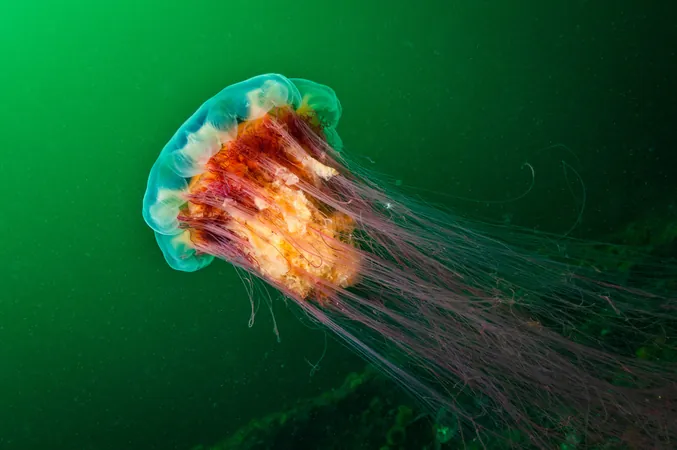
Unlocking Cosmic Secrets: HUN-REN Researchers Challenge AI Limits and Discover Stellar Mysteries
2024-11-19
Author: Daniel
Can AI Understand Earth Sciences? A Warning Sign!
While large language models (LLMs) such as ChatGPT, Bard, and Hungary's PULI GPT-3SX are heralded for their ability to process vast amounts of information with ease, researchers have highlighted serious concerns regarding their reliability. Issues such as response distortions, privacy threats linked to user data, and the models' sometimes baffling inaccuracies have prompted calls for a renewed focus on critical analysis.
Investigating the credibility of ChatGPT's responses to 100 key questions in Earth Sciences, researchers identified a striking phenomenon: although the terms "Earth Sciences" and "Geosciences" are synonymous, they yield different interpretations in queries posed to LLMs. This underlines the necessity for rigorous human oversight when interpreting AI-generated insights. While LLMs display remarkable capabilities, they cannot supplant human judgment, which is vital to the scientific method.
When Did the Sun Really Take Shape? New Insights!
The quest to understand the origins of the Sun has captivated scientists for generations. Recently, an international collaboration that included the Konkoly Thege Miklós Astronomical Institute and the University of Szeged made significant strides by estimating the Sun's formation timeframe, which spans an impressive 4.6 billion years.
Using advanced techniques at a specialized particle accelerator, researchers measured the decay of fully ionized thallium ions. This allowed them to calculate the production of radioactive lead (205Pb) in the Sun’s interior. Their findings revealed that the Sun formed rapidly, within a mere 10 to 20 million years after the collapse of its original gas cloud, indicating its birth within a cluster of stars that have long since dispersed throughout the galaxy.
Betelgeuse: A Star with a Mysterious Companion?
The enigmatic behavior of Betelgeuse, characterized by its fluctuations in brightness, has puzzled astronomers, leading some to speculate that a supernova event could be on the horizon. However, fresh research from HUN-REN and their U.S. counterparts hints at a different explanation—one involving a hitherto unknown companion star.
Affectionately dubbed "Betelbuddy" by lead researcher Jared Goldberg, this potential companion could be responsible for clearing the dust that engulfs Betelgeuse, thereby causing periodic changes in luminosity. While the exact nature of Betelbuddy remains elusive—possible candidates include a Sun-like star or even a neutron star—the researchers are poised to confirm its existence during a promising observation period around December 6.
Should the team successfully capture evidence of Betelbuddy, it could redefine our understanding of both Betelgeuse and the dynamics of stellar evolution in our galaxy.
Conclusion: A Future of Discovery Awaits!
With each revelation from the HUN-REN Research Center, the frontiers of science are pushed further, challenging our grasp of both technology and the cosmos. As researchers navigate the complexities of AI and unveil the secrets of stars like the Sun and Betelgeuse, we stand on the brink of transformative discoveries that could reshape our understanding of the universe and our place within it. Stay tuned as we continue to explore the frontiers of science!


 Brasil (PT)
Brasil (PT)
 Canada (EN)
Canada (EN)
 Chile (ES)
Chile (ES)
 España (ES)
España (ES)
 France (FR)
France (FR)
 Hong Kong (EN)
Hong Kong (EN)
 Italia (IT)
Italia (IT)
 日本 (JA)
日本 (JA)
 Magyarország (HU)
Magyarország (HU)
 Norge (NO)
Norge (NO)
 Polska (PL)
Polska (PL)
 Schweiz (DE)
Schweiz (DE)
 Singapore (EN)
Singapore (EN)
 Sverige (SV)
Sverige (SV)
 Suomi (FI)
Suomi (FI)
 Türkiye (TR)
Türkiye (TR)